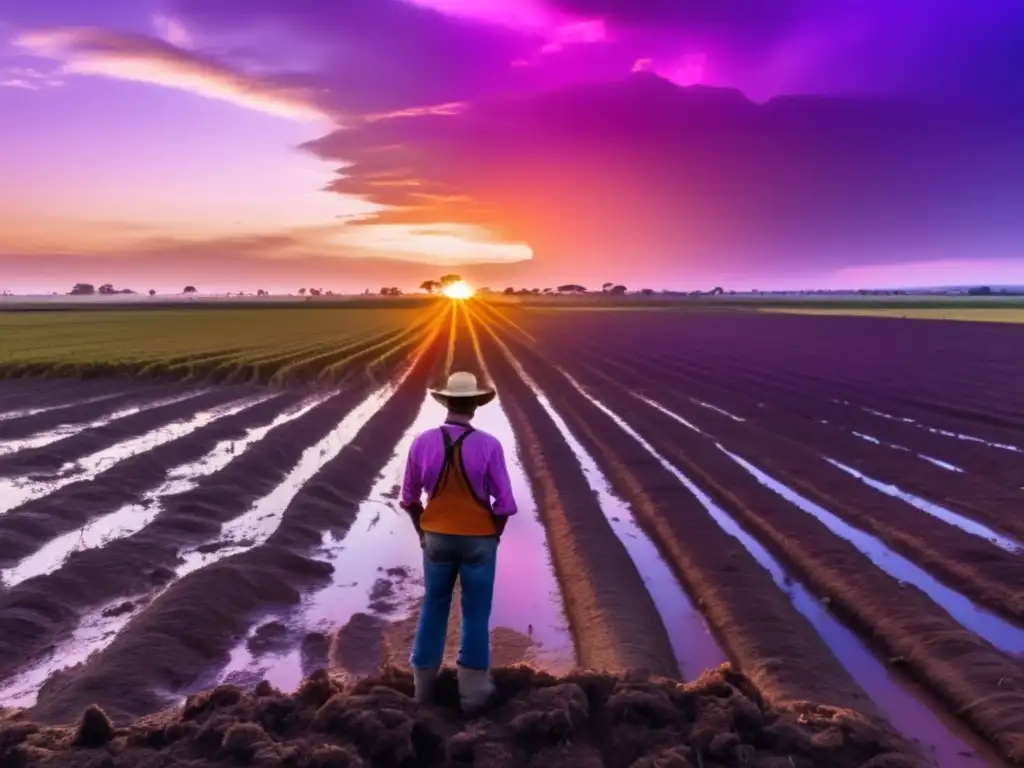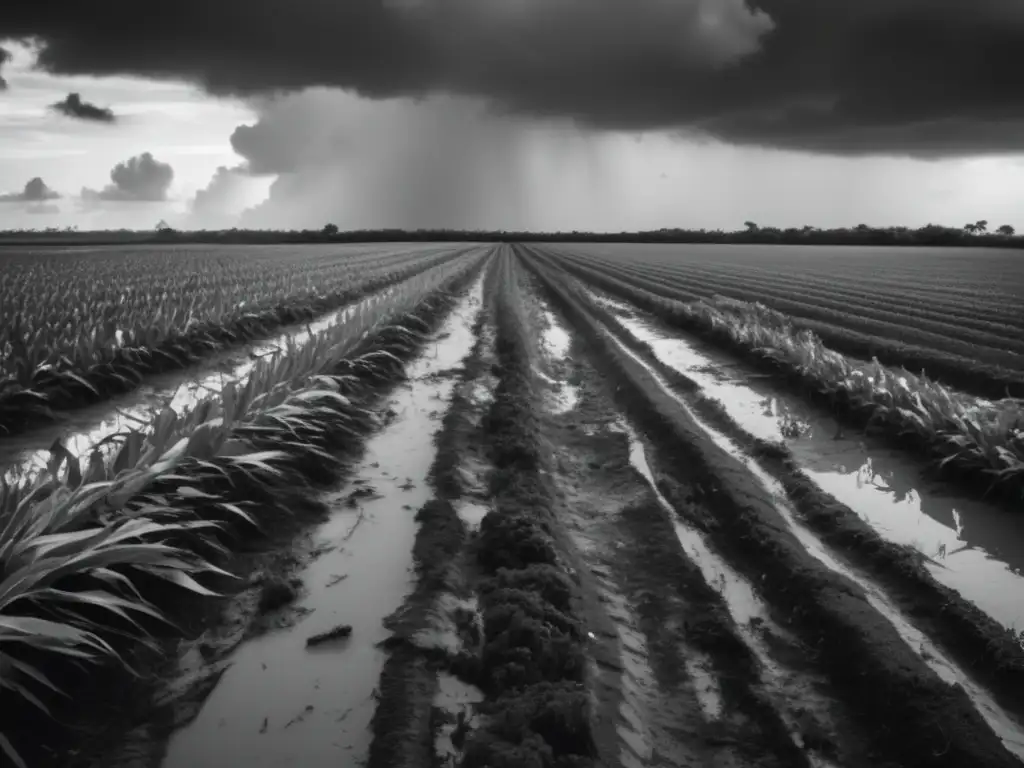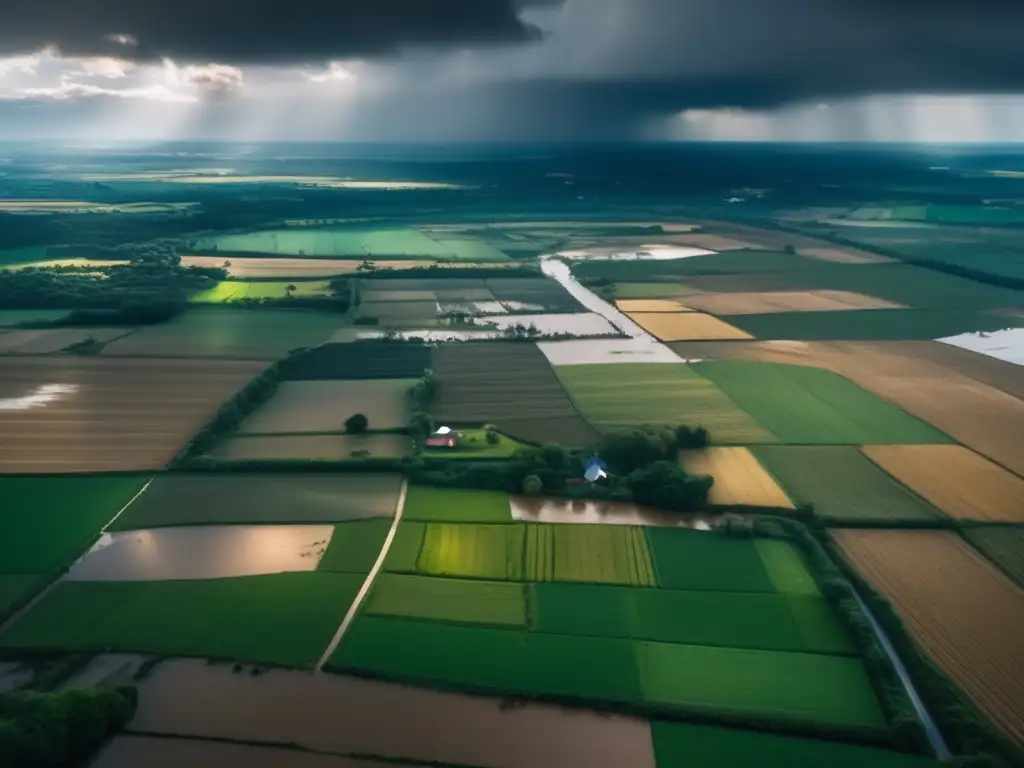Hurricanes And Agriculture: A Tale Of Destruction And Rebirth

Hurricanes and Agriculture: A Tale of Destruction and Rebirth
Introduction
When hurricanes strike, they bring with them a destructive force that affects not only people's lives and homes but also the agricultural industry. Farmers and ranchers face the loss of crops and livestock, destruction of infrastructure, and financial hardships. Hurricanes have long-lasting impacts on the agricultural sector, as the rebuilding process can take years. This article will explore the impact of hurricanes on agriculture and how farmers and ranchers can prepare for and recover from these natural disasters.
The Impact of Hurricanes on Agriculture

The Loss of Crops and Livestock
One of the most significant impacts of hurricanes on agriculture is the loss of crops and livestock. High winds, heavy rain, and flooding can destroy crops, rendering them unsalvageable. Livestock that cannot be evacuated or easily moved are also at risk. In addition, contaminated water, damaged infrastructure, and power outages can lead to the loss of Animal Feed and water sources, which can severely impact the health and well-being of livestock. This loss can lead to significant economic hardship for farmers and ranchers.
Destruction of Infrastructure
Another significant impact of hurricanes on agriculture is the destruction of infrastructure. This includes buildings, fences, irrigation systems, land, and equipment. These damages can cost farmers and ranchers thousands of dollars in repairs and replacements. Without access to crucial infrastructure, farmers and ranchers may not be able to resume their operations, leading to further economic loss.
Financial Hardships
Finally, hurricanes can often bring about significant financial hardship for the agricultural industry. The cost of repairing and replacing damage to crops, livestock, and infrastructure can be exorbitant. Furthermore, farmers and ranchers often face a loss of income due to the inability to produce crops or sell livestock. This financial loss can lead to economic instability for farmers and ranchers, who may be forced to take on debt or even leave the industry altogether.
Preparing for Hurricanes

Developing a Plan
One of the most important steps farmers and ranchers can take is to develop a comprehensive plan for hurricane preparation. This plan should include evacuation procedures for livestock and staff, securing agricultural equipment and infrastructure, and identifying alternative sources of feed and water. By having a preparedness plan in place, farmers and ranchers can minimize losses and recover more quickly from the storm's impacts.
Protecting Crops and Livestock
In addition to developing a plan, farmers and ranchers can take steps to protect their crops and livestock in the event of a hurricane. This includes moving livestock to higher ground or more secure facilities, securing loose items that can become projectiles in high winds, and harvesting crops that are mature enough to withstand the storm. Farmers and ranchers should also prepare for post-hurricane recovery by identifying potential sources of feed and water and having backup generators on hand to power essential infrastructure.
Recovering from Hurricanes

Assessing Damage and Losses
After a hurricane has passed, farmers and ranchers must assess the damage and losses to their operations. This includes inspecting infrastructure, assessing the condition of crops and livestock, and determining any financial losses. This information is crucial for accessing disaster relief assistance and insurance claims.
Accessing Assistance
Farmers and ranchers impacted by hurricanes may be eligible for disaster relief assistance from federal, state, or local governments. This assistance can include low-interest loans, grant programs, and other forms of financial aid. Farmers and ranchers should also check with their insurance companies to determine what damages may be covered by their policies.
Rebuilding Infrastructure and Restocking Livestock
Finally, after assessing damage and accessing assistance, farmers and ranchers must begin the rebuilding process. This includes repairing or replacing infrastructure and restocking livestock that were lost or damaged during the storm. This process can take months or even years, but it is crucial for the long-term sustainability of agricultural operations.
Frequently Asked Questions

-
How can farmers and ranchers protect their crops and livestock during a hurricane?
Farmers and ranchers can protect their crops and livestock by moving them to higher ground or more secure facilities, securing loose items that can become projectiles in high winds, and harvesting crops that are mature enough to withstand the storm. They should also identify potential sources of feed and water and have backup generators on hand to power essential infrastructure.
-
What kind of assistance is available to farmers and ranchers impacted by hurricanes?
Farmers and ranchers impacted by hurricanes may be eligible for disaster relief assistance from federal, state, or local governments. This assistance can include low-interest loans, grant programs, and other forms of financial aid. They should also check with their insurance companies to determine what damages may be covered by their policies.
-
How long does the recovery process take for farmers and ranchers impacted by hurricanes?
The recovery process for farmers and ranchers impacted by hurricanes can take months or even years. The rebuilding process includes repairing or replacing infrastructure and restocking livestock that were lost or damaged during the storm.
-
How can farmers and ranchers prepare for a hurricane?
Farmers and ranchers can prepare for a hurricane by developing a comprehensive plan for hurricane preparation, including evacuation procedures for livestock and staff, securing agricultural equipment and infrastructure, and identifying alternative sources of feed and water. They should also take steps to protect their crops and livestock in the event of a hurricane.
-
What are the long-term impacts of hurricanes on the agricultural industry?
The long-term impacts of hurricanes on the agricultural industry include financial losses, the loss of crops and livestock, and the destruction of infrastructure. These damages can have long-lasting impacts on the sustainability of agricultural operations.
Conclusion
When hurricanes strike, they bring with them a destructive force that can have lasting impacts on the agricultural industry. Farmers and ranchers face the loss of crops and livestock, destruction of infrastructure, and financial hardship. However, by taking steps to prepare for and recover from hurricanes, farmers and ranchers can minimize losses and ensure the long-term sustainability of their operations. This information is essential for those living in hurricane-prone areas and for the general public who wish to support the agricultural industry in times of need.
This article has provided valuable information about the impact of hurricanes on agriculture, how farmers and ranchers can prepare for and recover from these natural disasters, and potential sources of assistance. We encourage readers to share their thoughts in the comments section and to positively engage with HurricaneInsider.org, whether by subscribing, sharing the article on social media, or other forms of participation. Thank you for taking the time to read this article.
Additional Resources

For more information on preparing for and recovering from hurricanes in the agricultural industry, please visit the following resources:
 Aircraft Reconnaissance: Flying Into The Eye Of The Storm
Aircraft Reconnaissance: Flying Into The Eye Of The Storm Retired Hurricane Names: Why And Which Ones
Retired Hurricane Names: Why And Which Ones Ancient Hurricanes: What We Know From The Geological Record
Ancient Hurricanes: What We Know From The Geological RecordIf you want to discover more articles similar to Hurricanes And Agriculture: A Tale Of Destruction And Rebirth, you can visit the Basic knowledge about hurricanes: category.
Leave a Reply

Articulos relacionados: